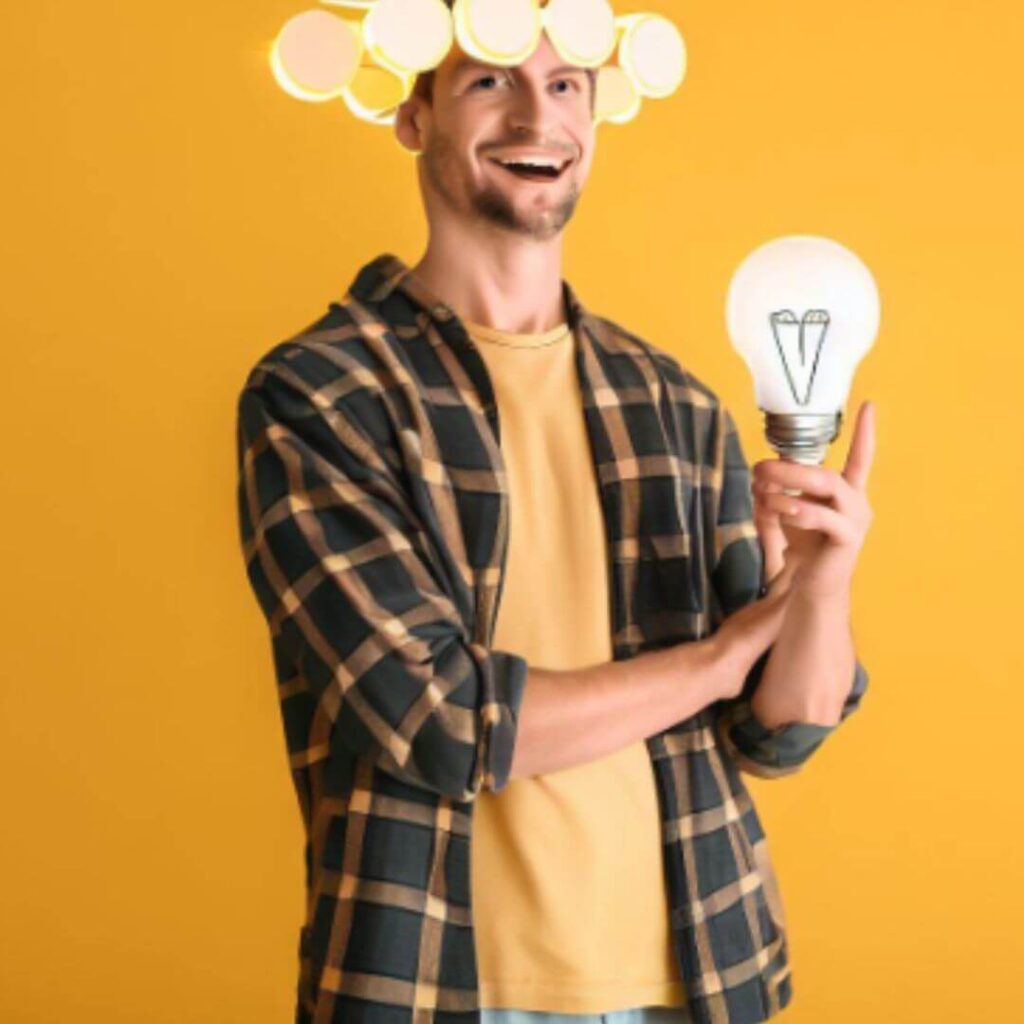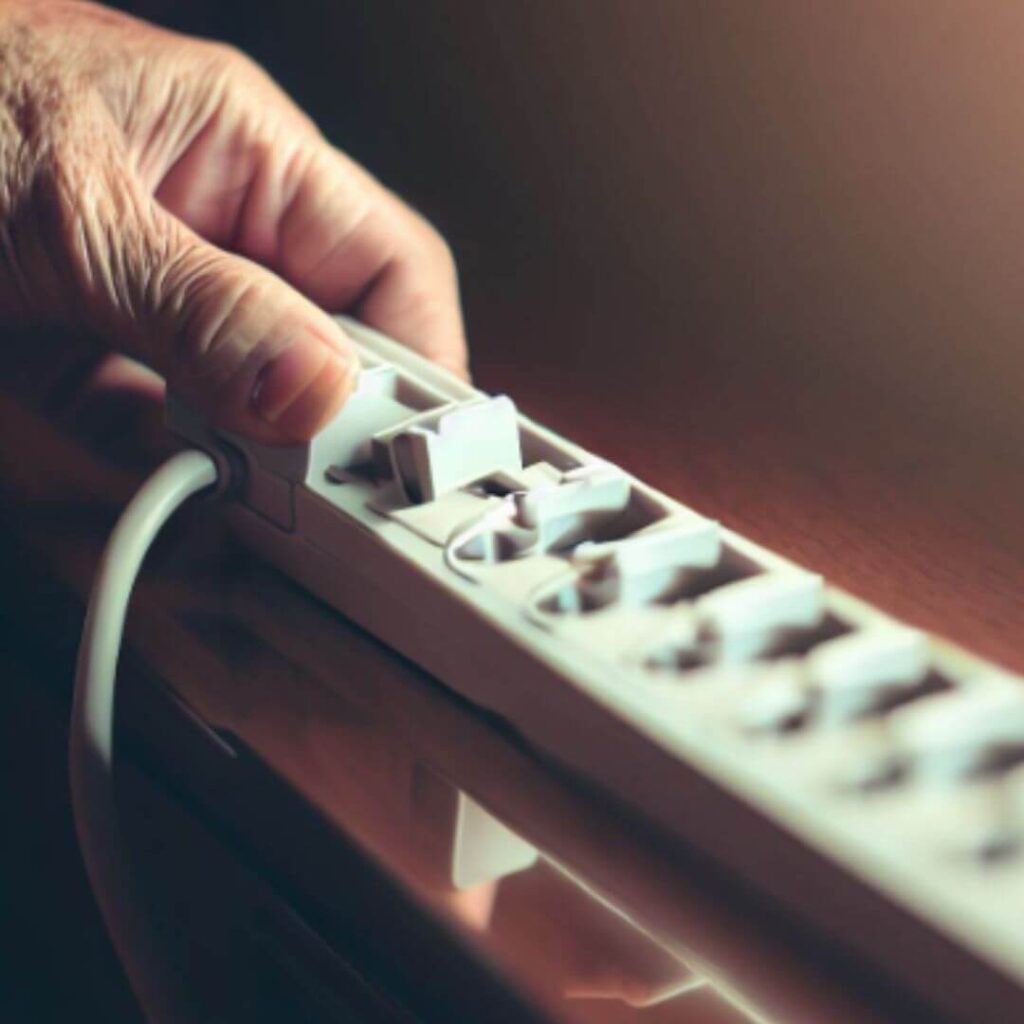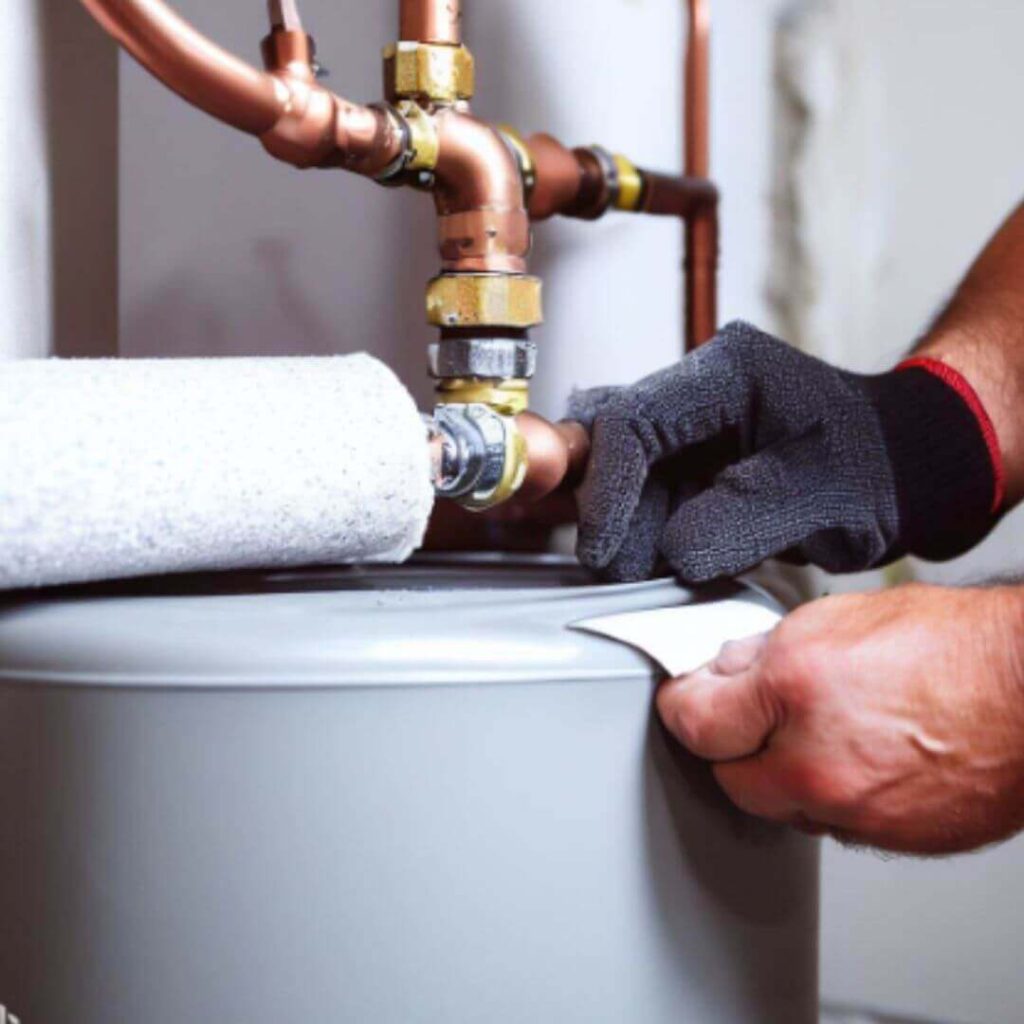10 Tips To Lower Your Electricity Costs and Save on Your Electricity Bill


The cost of electricity can be an unwelcome shock on your monthly utility bill, especially if you’re unprepared for it and need to realize how much power you’re using.
Table of Contents
However, energy efficiency measures can go a long way in lowering overall energy usage and bills. Implementing some of the following tips into your daily routine can significantly lower your energy costs without drastically changing your lifestyle!
1. Switch out your unnecessary light bulbs
Light pollution is a problem for everyone. It doesn’t just affect astronomers trying to study the stars. It also wastes money and energy. Estimates suggest that the world spends about 120 billion dollars annually on unnecessary lighting. In the United States, this costs about 37 billion dollars per year!
So what can we do about it?
One easy solution is to switch out your unnecessary light bulbs. Look for energy-efficient options like LED bulbs. These bulbs use less electricity and last longer, saving you money in the long run. You can also install timers or motion sensors to ensure your lights are only on when needed. Every little bit helps!
2. Educate Yourself on How to Read Your Meter
Reading your meter is easy and free to ensure you’re paying only what you need. Some utilities make it easier for customers to read their meters by providing online access.
Check with your utility company to find out what’s available in your area. If they don’t offer this service, they should be able to give you some tips on how to read a meter.
3. Educate Yourself on the Different Types of Lighting
In the past, we have been told that the only way to get light was with a light bulb. However, there are many different types of lighting that you can use to illuminate your home.
These include:
- Fluorescent tubes
- Compact fluorescents
- LED lights
- Halogen lights
- and Incandescent bulbs.
4. Use Power Strips

An easy way to conserve electricity is to unplug items you’re not using. For example, unplugging your TV, microwave, dishwasher, or any other appliance will help save electricity.
Power strips allow you to conveniently turn off all the devices in a single place instead of walking around the house. These are especially useful if you’re planning on being away from home for an extended period.
Read more : Discover 7 things , What in Your Homes Uses the Most Electricity
5. Consider a Smart Thermostat
One way to lower your electricity costs is to consider replacing your old thermostat with a more innovative model. Intelligent thermostats cost less than $200, connect wirelessly to the internet, and can save you up to 20% in energy bills by automatically adjusting the temperature based on when you’re home.
Plus, they come with a touchscreen interface that’s easy to use, so it’s hard to get wrong. As a result, homeowners have more accessible time-saving money without thinking about it all the time.
5.1 Install a programmable thermostat:
A programmable thermostat enables you to set the temperature at different times during the day. You can also set it to adjust temperatures automatically when you’re away or asleep, which will help save energy while you’re gone.
6. Utilize Ceiling Fans
Ceiling fans are among the simplest ways to lower your electricity costs. On summer days, running a ceiling fan in your home can make all the difference between a comfortable living space and an unbearable one.
This is because ceiling fans do more than circulate air. They also push hot air down from the ceiling. This helps take some of the load off of your home’s central AC unit, which means it won’t have to work as hard to cool your home down–saving you money on your electricity bill while simultaneously making life more comfortable in warm weather.
7. Take Advantage of Natural Light
One of the easiest ways to save money on your electricity bill is by using natural light. Depending on where you live, this may be easier than others, but if you’re able to use a lot of natural light in your home or office, it will not only help conserve energy but also leave a smaller carbon footprint.
One way to take advantage of natural light is by installing more windows or skylights in your home or office building.
If you don’t have an option for adding windows, try to do the next best thing: open curtains or blinds during the daytime so that sunlight can naturally illuminate your space. You can also turn off lights when the sun is shining to use this free resource fully.
8. Utilize equipment more effectively
- Buy a water dispenser instead of bottled water. You’ll save money in the long run by not buying bottled water, and you will be reducing your carbon footprint as well.
- Turn off your lights when they’re not needed to avoid wasting energy. This includes turning off lights in rooms that are not being used or if you’re leaving for a few minutes, even if it’s just for a quick break from work.
- Turn off computers, TVs, and other electronics at night when they’re not being used to avoid phantom power consumption that can cost about $100 per year per device
- Unplug electronics when they aren’t being used to eliminate phantom power consumption.
9. Insulate your water heater

Insulating your water heater is one of the most cost-effective ways to save on your electricity bill. If your water heater is not insulated, it can be 10-15 degrees hotter than the room it’s in. This increases its energy usage by up to 25%.
10. Dishwasher and washing machine use is recommended at night
A great way to save money is to use the right appliances at the right time. For example, running your dishwasher and washing machine at night can be a great way to save money. You will not be using electricity while asleep, saving you that cost.
Plus, it is often cheaper to run your dishwasher overnight when there is less demand for electricity. If you do this, ensure your washer has a timer or sensor, so it knows when no one is home. The same goes for clothes dryers; they should always be set to Timed Dry mode so they know not to turn on if no one’s home- preventing unnecessary waste of energy.
FAQ
- How can I lower my electricity costs?
- Implement energy-saving habits and practices, such as turning off lights when not in use, using energy-efficient appliances, and optimizing thermostat settings.
- What are some simple ways to save on my electricity bill?
- Some simple ways to save include using natural lighting whenever possible, unplugging electronics when not in use, and air-drying clothes instead of using a dryer.
- Are energy-efficient appliances worth the investment?
- Yes, energy-efficient appliances may have a higher upfront cost but can lead to significant savings over time due to their lower energy consumption.
- How can I reduce my heating and cooling costs?
- Use programmable thermostats to regulate temperatures, properly insulate your home, and consider using fans or natural ventilation to reduce reliance on air conditioning.
- Is it necessary to unplug electronics when not in use?
- Standby power, also known as vampire power, can still consume energy even when electronics are not in use. Unplugging them or using power strips with switches can help eliminate this wasted energy.
- How can I save on lighting costs?
- Switch to energy-efficient LED bulbs, make use of natural light during the day, and install motion-sensor or timer switches to automatically turn off lights in unoccupied rooms.
- Are there any energy-saving tips for laundry?
- Wash clothes in cold water, line-dry whenever possible, and clean the lint filter in your dryer regularly to improve its efficiency.
- Can weatherstripping and insulation help lower electricity costs?
- Yes, properly sealing gaps and adding insulation to your home can minimize heat loss during winter and prevent heat gain during summer, reducing the need for excessive heating or cooling.
- How can I save on water heating costs?
- Set the water heater temperature to an energy-efficient level, insulate the hot water tank and pipes, and consider using efficient water-saving fixtures and appliances.
- Are renewable energy options worth exploring?
- Renewable energy options, such as solar panels or wind turbines, can generate clean electricity and potentially reduce or eliminate your reliance on the grid, leading to long-term cost savings.
Remember, individual results may vary based on factors like location, energy consumption habits, and the specific measures implemented. It’s recommended to assess your own energy usage and consult with energy experts or utility providers for personalized advice on reducing your electricity costs and saving on your electricity bill.
when was electricity invented
Electricity, as a natural phenomenon, has been known since ancient times. However, the discovery and understanding of electricity as a controllable and usable form of energy began in the late 17th and early 18th centuries. Significant contributions were made by scientists such as Benjamin Franklin, who conducted experiments with lightning and identified electricity as a form of charge. The invention of practical electric power systems and the development of electric generators and motors occurred in the late 19th century, with notable contributions from inventors like Thomas Edison and Nikola Tesla.
who invented electricity
Electricity, as a natural phenomenon, was not invented by a specific individual. It has been known since ancient times, with early observations of static electricity dating back to the ancient Greeks. However, the understanding and harnessing of electricity as a controllable and usable form of energy involved contributions from various scientists and inventors over the centuries. Some notable figures in the development of electricity include Benjamin Franklin, Alessandro Volta, Michael Faraday, Thomas Edison, and Nikola Tesla. Each of these individuals made significant discoveries and advancements that contributed to our modern understanding and practical use of electricity.
how to make electricity in little alchemy 2
To make electricity in Little Alchemy 2, you need to combine two basic elements: metal and energy. Follow the steps below:
- Open the Little Alchemy 2 game on your device.
- Locate the search bar at the top of the game screen.
- Type “metal” into the search bar and select the metal element.
- Drag the metal element to the game’s workspace.
- Now, type “energy” into the search bar and select the energy element.
- Drag the energy element and combine it with the metal element already in the workspace.
- As you combine the metal and energy elements, you will see the creation of “electricity” in the workspace.
Remember, this is a game and the combinations in Little Alchemy 2 may not reflect real-world scientific processes. It’s purely for entertainment purposes.
who discovered electricity ?
Electricity, as a natural phenomenon, was not discovered by a single individual. The understanding and exploration of electricity began over many centuries with contributions from various scientists and inventors. However, one notable figure in the history of electricity is Benjamin Franklin. In the 18th century, Franklin conducted experiments with electricity, including his famous kite experiment in 1752, which demonstrated the connection between lightning and electricity. His work and discoveries laid the foundation for further advancements in the field of electricity. It’s important to note that electricity was present in nature long before humans understood its principles or harnessed it for practical use.
how is electricity generated
Electricity is generated through various methods, but the most common way involves the use of power plants. Here’s a simplified explanation of how electricity is typically generated:
- Power plants: Electricity is often produced in power plants using different sources such as fossil fuels (coal, natural gas), nuclear energy, renewable sources (solar, wind, hydro), or a combination of these.
- Generation: The energy source is used to spin a turbine, which is connected to a generator. As the turbine spins, it creates mechanical energy.
- Generator: The generator consists of coils of wire and a magnet. When the turbine spins, it causes the magnet to move inside the coils, creating a magnetic field.
- Electromagnetic induction: According to Faraday’s law of electromagnetic induction, the changing magnetic field induces an electric current in the wire coils.
- Transmission and distribution: The electric current generated in the power plant is then transmitted over high-voltage power lines to substations and then distributed to homes, businesses, and industries through a network of power lines.
- Transformers and voltage regulation: Along the transmission and distribution network, transformers are used to step up or step down the voltage to ensure efficient transmission and safe usage at different locations.
- Utilization: Finally, the electricity reaches homes and other locations, where it powers appliances, lighting, electronics, and other electrical devices.
It’s worth noting that there are other methods of generating electricity, such as through photovoltaic cells in solar panels or through the chemical reactions in batteries. The specific process can vary depending on the energy source used and the technology employed.
when was electricity invented
Electricity as a natural phenomenon has been known for thousands of years, but harnessing and utilizing electricity for practical purposes is a more recent development. The understanding and invention of electricity evolved over time through the work of various scientists and inventors. Here are some key milestones:
- Ancient Times: The ancient Greeks discovered static electricity, which is the accumulation of electric charge on surfaces.
- 17th Century: In the 1600s, experiments by scientists like William Gilbert and Otto von Guericke led to a better understanding of electricity and magnetism.
- 18th Century: The 18th century saw significant advancements in the understanding of electricity. Benjamin Franklin conducted his famous kite experiment in 1752, demonstrating the connection between lightning and electricity.
- 19th Century: In the early 19th century, Michael Faraday’s experiments with electromagnetic induction laid the foundation for generating electricity. Thomas Edison and Nikola Tesla made significant contributions to the practical application of electricity, with Edison inventing the electric light bulb and Tesla championing alternating current (AC) power distribution.
- Late 19th to 20th Century: The late 19th and early 20th centuries witnessed rapid advancements in electricity generation, transmission, and utilization. Power plants were built, electrical grids were established, and electricity became increasingly accessible for residential, commercial, and industrial use.
While it’s challenging to pinpoint a specific date for the invention of electricity, the development of our understanding and practical use of electricity unfolded over several centuries through the cumulative efforts of many scientists and inventors.
when was electricity invented
The concept of electricity has been known for thousands of years, but the practical use and harnessing of electricity began to take shape in the late 18th century. One of the key milestones in the development of electricity was the discovery of electric currents and their properties. This occurred in the 18th century through the work of several scientists, including Benjamin Franklin, who conducted his famous kite experiment in 1752.
However, it wasn’t until the early 19th century that significant advancements in electricity occurred. The invention of the electric battery by Alessandro Volta in 1800 marked a significant milestone in the generation of electricity. This was followed by Michael Faraday’s discovery of electromagnetic induction in the 1830s, which paved the way for the development of electric generators and the practical generation of electricity.
The widespread adoption and utilization of electricity began in the late 19th century with the establishment of electrical power grids and the invention of electric light bulbs by Thomas Edison and his team. The advancements in electricity continued throughout the 20th century, leading to the modern electrical systems and technologies that we rely on today.
is electric utilities central a good career path
The choice of a career path in electric utilities central can be a good option for many individuals, depending on their interests, skills, and long-term goals. Here are a few factors to consider:
- Job Stability: Electric utilities central, which involve managing and distributing electricity to consumers, are essential services. They play a critical role in providing electricity for residential, commercial, and industrial needs. As a result, the demand for professionals in this field remains relatively stable.
- Career Opportunities: The electric utilities central sector offers a wide range of career opportunities. From engineers and technicians to operations and management roles, there are various positions available at different levels. Advancements in technology, renewable energy integration, and grid modernization are creating new job prospects in the industry.
- Technological Advancements: The electric utilities central sector is experiencing significant changes driven by technological advancements. The industry is shifting towards smart grids, renewable energy integration, energy storage, and digitalization. This opens up opportunities for professionals to work with cutting-edge technologies and contribute to the transformation of the energy sector.
- Job Satisfaction: For individuals interested in sustainability, clean energy, and making a positive impact on the environment, a career in electric utilities central can be fulfilling. Working in this field allows you to contribute to the efficient and reliable supply of electricity, promote renewable energy adoption, and support the transition to a more sustainable energy future.
- Challenges and Continuous Learning: The electric utilities central industry presents challenges such as grid reliability, managing peak demand, and integrating new technologies. This creates opportunities for continuous learning and professional growth, as individuals can stay updated with the latest advancements and solutions in the field.
Ultimately, the suitability of a career path in electric utilities central depends on your personal interests, skills, and long-term goals. It’s advisable to research and gain a deeper understanding of the industry, explore potential job roles, and consider the opportunities for growth and development within the field. Networking with professionals already working in the sector can provide valuable insights and guidance as well.
how to clean electric stove top
To clean an electric stove top, you can follow these steps:
- Allow the stove to cool: Make sure the electric stove is completely cool before starting the cleaning process. This will prevent any risk of burns or accidents.
- Remove loose debris: Use a soft brush or a damp cloth to remove any loose debris, crumbs, or food particles from the surface of the stove. Be gentle to avoid scratching the surface.
- Prepare a cleaning solution: Mix a solution of mild dish soap and warm water in a bowl or a spray bottle. Alternatively, you can use a specialized stove top cleaner recommended for your stove model.
- Apply the cleaning solution: Dip a sponge or a soft cloth into the cleaning solution and wring out any excess liquid. Gently wipe the stove top surface, paying special attention to any stains or spills. For stubborn stains, you can let the cleaning solution sit on the surface for a few minutes to loosen the grime.
- Scrub the surface: If needed, use a non-abrasive scrub brush or a soft sponge to scrub away any stubborn residue or grease. Be careful not to apply too much pressure that could damage the stove top.
- Rinse and wipe clean: Once you have cleaned the entire surface, rinse the sponge or cloth thoroughly with clean water and wipe down the stove top to remove any soap residue. Then, use a dry cloth or paper towel to dry the surface completely.
- Clean the control knobs and surrounding areas: Don’t forget to clean the control knobs and the surrounding areas using the same mild cleaning solution and a damp cloth. Dry the knobs and the surrounding area thoroughly.
- Polish and shine (optional): If you want to give your electric stove top an extra shine, you can use a specialized stove top polish or a glass cleaner. Follow the instructions on the product and apply it to the surface using a clean cloth. Polish the surface gently in circular motions until it shines.
Remember to consult the manufacturer’s instructions or refer to the user manual specific to your electric stove for any specific cleaning recommendations or precautions.
are electric toothbrushes better
Electric toothbrushes offer several advantages over manual toothbrushes, making them a popular choice for many people. Here are some reasons why electric toothbrushes are considered better by many:
- Efficiency: Electric toothbrushes are designed to provide more consistent and efficient brushing compared to manual toothbrushes. They often feature oscillating or rotating brush heads that can remove plaque and debris more effectively.
- Improved oral hygiene: Due to their advanced brushing technology, electric toothbrushes can reach areas that are difficult to clean with a manual toothbrush, such as the back teeth and along the gumline. This can lead to better overall oral hygiene and reduce the risk of dental issues like cavities and gum disease.
- Built-in timers and sensors: Many electric toothbrushes come with built-in timers or sensors that ensure you brush for the recommended two minutes. Some models even have quadrant timers that remind you to switch to different sections of your mouth for thorough cleaning. These features help you maintain a consistent brushing routine.
- Pressure sensors: Some electric toothbrushes have pressure sensors that alert you if you’re applying too much pressure while brushing. Excessive pressure can damage the gums and tooth enamel, so this feature helps prevent overbrushing.
- Ease of use: Electric toothbrushes do most of the work for you, requiring less physical effort compared to manual toothbrushes. The rotating or oscillating brush heads do the cleaning motion, making brushing easier, especially for people with limited dexterity or physical disabilities.
- Options for different needs: Electric toothbrushes come in various models with different features and brush head options, including those specifically designed for sensitive teeth, braces, or gum care. This allows individuals to choose a toothbrush that caters to their specific oral health needs.
While electric toothbrushes offer these benefits, it’s important to note that proper brushing technique and regular dental check-ups are essential for maintaining good oral hygiene. It’s recommended to consult with your dentist or dental hygienist to determine the best toothbrush option for your specific oral health needs.
what is electric weak to
It seems there might be a misunderstanding or a typo in your question. “Electric weak” doesn’t have a specific meaning or reference in the context of electricity. If you meant to ask about the weaknesses or limitations of electricity, I can provide some information.
Electricity has a few limitations and weaknesses, which include:
- Dependency on power sources: Electricity relies on power sources such as fossil fuels, nuclear energy, or renewable sources like solar and wind. The availability and reliability of these power sources can affect the supply of electricity.
- Transmission and distribution losses: During the transmission and distribution of electricity through power lines, there are inevitable losses due to resistance, which results in some energy being dissipated as heat. These losses can reduce the overall efficiency of the electrical system.
- Environmental impact: Some power generation methods used to produce electricity, such as burning fossil fuels, can have negative environmental consequences, including air pollution and greenhouse gas emissions. However, the use of renewable energy sources can mitigate these impacts.
- Storage limitations: Electricity is challenging to store in large quantities efficiently. While there are various energy storage technologies available, such as batteries, pumped hydro storage, and thermal storage, their capacity and scalability may still be limited compared to the demand.
- Vulnerability to disruptions: Electric power systems can be susceptible to disruptions, including power outages caused by natural disasters, equipment failures, or cyber-attacks. These disruptions can impact the availability and reliability of electricity supply.
Despite these weaknesses, electricity remains a crucial and versatile form of energy that powers various aspects of our modern lives. Ongoing advancements in technology and the increasing adoption of renewable energy sources are addressing some of these limitations and working towards a more sustainable and resilient electrical infrastructure.
